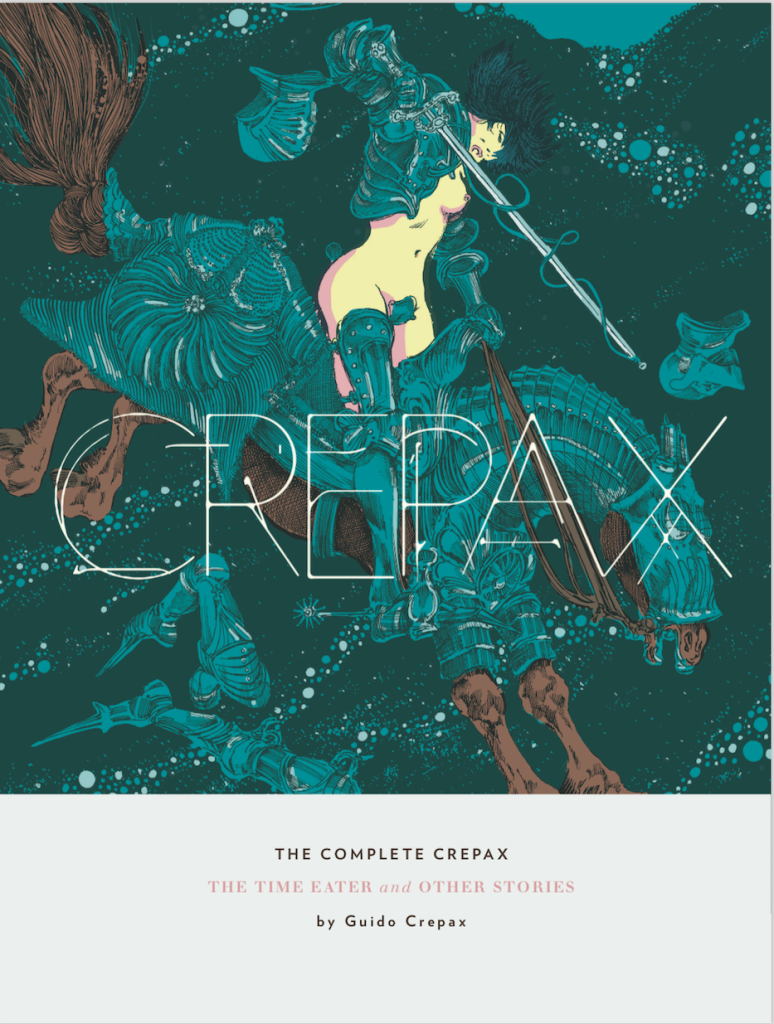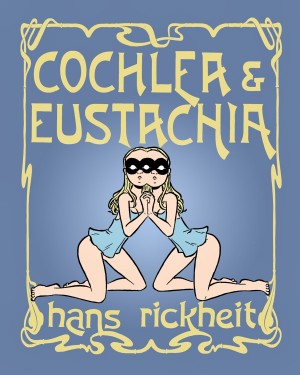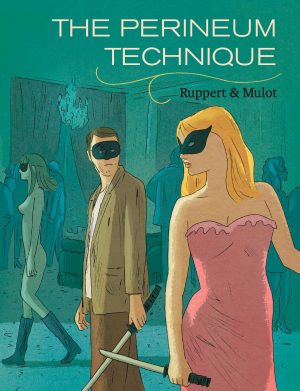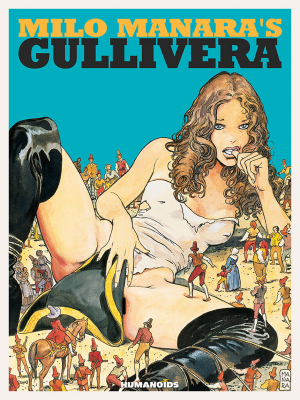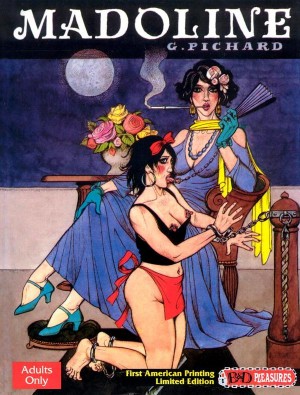Review by Graham Johnstone
Guido Crepax is acclaimed in Europe, but historically under-represented in English translation. Fantagraphics, who credibly claim to publish ‘the world’s best cartoonists’, are addressing that with this complete and well curated collection. Crepax’s greatest strength is his art, and that’s well showcased in these luxurious oversized editions.
The Italian artist/writer began making comics in the 1960s, and there’s still little to compare to his pages. However, his montage effects would soon be echoed by Steranko, and his sequences of micro-panels (eventually) by Chris Ware. His rendering style, though, shows obvious inspiration from Aubrey Beardsley, an artist of the fin de siècle Decadent movement, who illustrated Oscar Wilde’s provocative Salomé. Beardsley was being rediscovered as Crepax emerged. These pages display the same blend of fine lines, meticulously rendered textures, spot blacks balancing white space, and elegant sexuality. Any page here can be appreciated as much for its composition and ink-artistry, as for its figures and fashions.
Crepax surely writes what he wants to draw, most famously beautiful women. However that may disguise his range. Editor Manuel Espírito Santo organises The Complete Crepax volumes by loose themes, with this second labelled ‘Surreal’ stories. His introduction convincingly identifies Crepax’s inspiration from various modes of fantastic fiction, but also from art house cinema, including montage pioneer Sergei Eisenstein. The Swinging Sixties offers major inspiration for both the contemporary and futuristic stories here. That’s evident in the period accoutrements, pop psychology, progressive politics, and sexual permissiveness.
Several stories feature Crepax’s enduring heroine Valentina. She was introduced (Volume 1) in the, literal and figurative, underworld of ‘The Subterraneans’. That foundational story shapes her continuing erotic (mis)adventures here. Resulting trauma offers an explanation, (or at least a pretext), for the sexual and bondage fantasies that appear as preludes and interludes. Detailed feminist critiques are best saved for later volumes where the erotica is centre stage, but there’s no doubt Valentina is presented for the male (or female-attracted) gaze. However, she pursues her own desires, often without men, or at least earthmen. Sometimes, Valentina is largely passive, like ‘The Force of Gravity’, where she’s detained and drugged in a mental hospital. However the most rounded characters there are female, with the males mere plot-device antagonists. Most of the dialogue is amongst women, and about things other than men, and that’s decades before the Bechdel Test.
This volume’s loose ‘surreal’ theme encompasses a variety of approaches. The hundred-odd page ‘The Pirate Spaceship’ is an early genre mash-up, so plausibly channeling the Surrealist movement’s love of incongruous juxtapositions. The several Valentina stories are united only by the heroine and her sexual interludes, though both ‘Reflection’ and ‘The Force of Gravity’ (pictured), land visitors from space in Italy and a recognisable (if idealised) 1960s. ‘Valentina in Boots’ and ‘Marianna in the Trenches’ riff on fairy tales, in the spirit of the Surrealists’ attack on mundane reality, and ‘The Time Eater’ directly riffs on proto-Surrealist classic Alice in Wonderland. The invocation of Surrealism, then, is more than an easy handle for this volume, and in fact reveals a coherent basis for this very varied work.
Originally serialised, these stories can flow from one situation and idea into the next, with charming disregard for adding up to a structured novel. They occasionally frustrate, but mostly entertain – they’re packed with ideas, allusions, and intertextual references, the result eclectic and joyous.
Crepax’s art is reliably stunning, and his stories flawed, but fascinating and fun. The sexual/fetish material certainly needs a content warning. However, the $75 price will deter casual buyers, so most readers will know what to expect.
